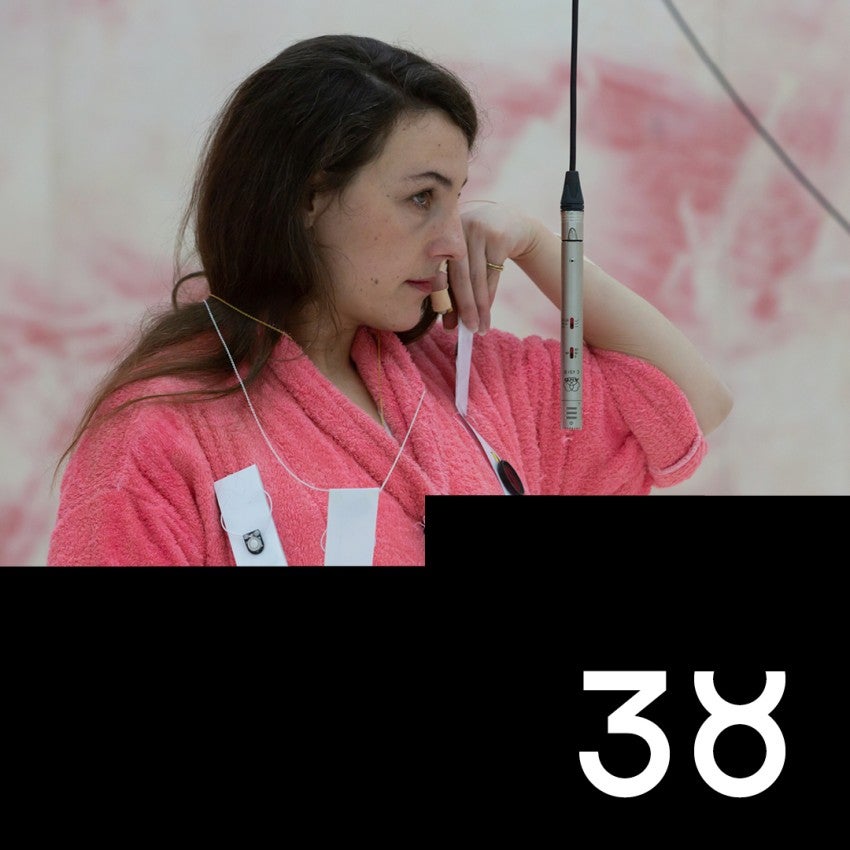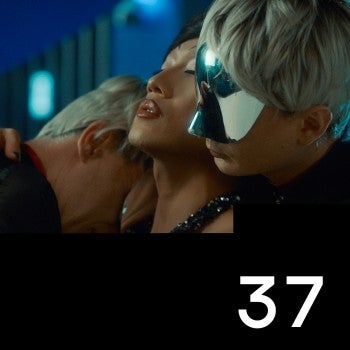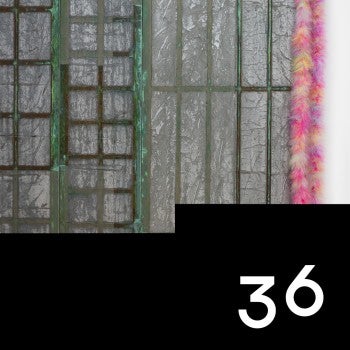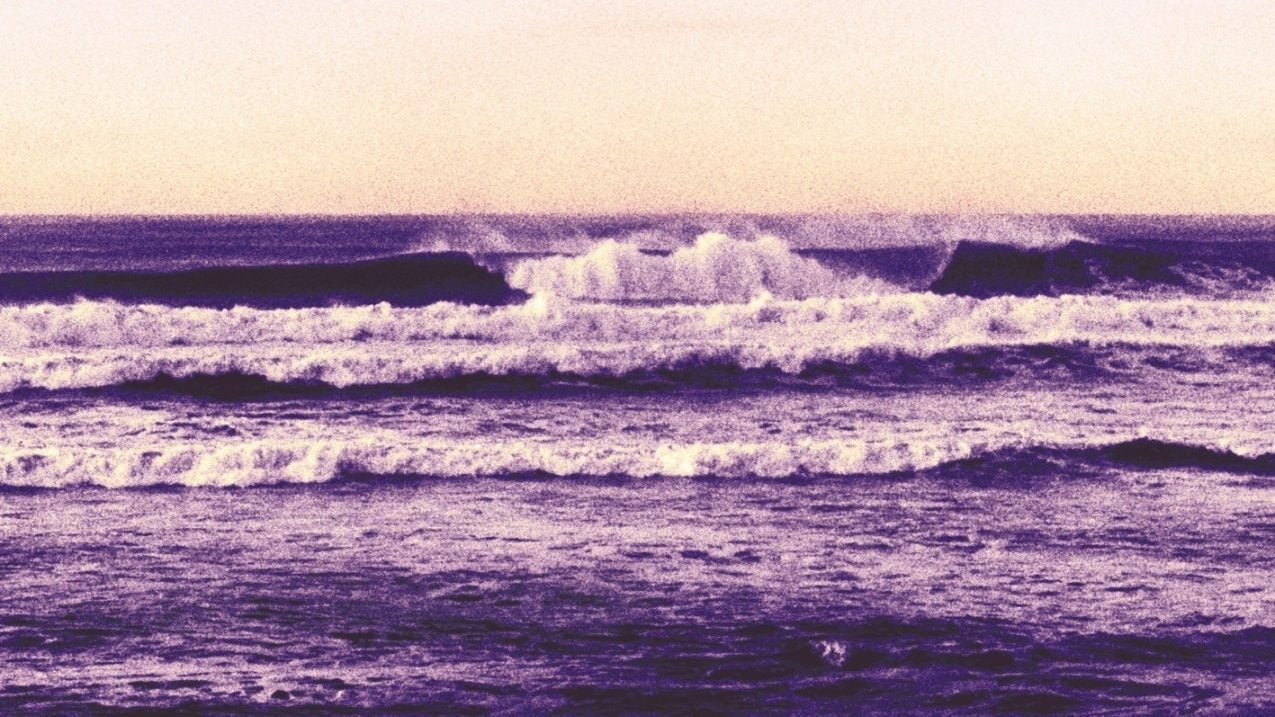
...the problem we have, as humans, is that our senses report the world to us in a certain way.
There are very few artists as invested in the importance and role of the pre-image and the after-image as Martine Aballéa. The pre-image being the force of anticipation and awe before the image appears, and the after-image being the performative imagination that is released by the work. Therefore, it is very difficult to describe her work. We can name the many forms her practice takes—installations, objects, postcards, artist books, posters…—but what seems central is her interest in the super sentient.
Art is not a living creature and yet it acts as a living thing because art is sentient, it is shaped by the experience of the world, of the real, its form is determined by the senses. Whose senses? This is an important question since in seeing the colors of Aballéa’s images and objects, such as her use of luminous pinks and blues in a recent series of postcard works made during the Covid-19 pandemic lockdown, we might interpret these images as belonging to dreams or to drug-induced hallucinations or to the digital world. However, the first thing that comes to my mind is that they may be made for a different eye.
Some years ago, the marine biologist David Gruber explained to me in a conversation that the problem we have, as humans, is that our senses report the world to us in a certain way. And we, humans, take this certain way of sensing—seeing, smelling, touching etc—as the norm. When we see the Ocean as blue, we think that the Ocean is blue. When we see a pink flower, we are convinced that the pink-ness is in the flower and that we just perceive what the flower is. Gruber was, at that time, deeply invested in producing camera lenses able to replicate the eye of a turtle. His motivation was: how can we explore the Oceans and the seas with our own eyes? Eyes that were not made for the depth of the sea? What are we going to understand of this world with our senses? I remember my surprise in listening to his thinking. All of a sudden, this most obvious statement produced in me an immense curiosity towards the world seen by others.
Gruber spent almost a decade of research creating devices that resemble turtle eyes and on a trip to the Solomon Islands1, soon after our conversation, he took a picture of an incredibly beautiful biofluorescent turtle. With the camera being the eye of a non-human, life appeared as it does to them: different. He discovered that animals either emanate bioluminescence or reflect blue light around them in order to generate the light that Ocean depths lack. Through this process, their bodies were re-shaped by lines of colors so bright and intense that even their animal form was another. Lines of yellows and greens and oranges; bright as if they possessed an energy comparable to an electric circuit. These lines were obviously a complex code of signals that animals use to communicate. From love to danger, all was embedded in their bodies, telling the eyes of other animals what to expect, from mating to hunting.
The Metabolism of Art
During the 1980s the artist began working on fictional texts integrated in visual works, such as the Romans Partiels series in 1982, Epaves du désir in 1995 and the Nouveaux amours / Nouveaux crimes series in 1997. Text, fiction and images coexist but they have a very different function. The text-based artworks—which are of particular concern to her—are unlike photography, sculpture and the dramaturgy created by installations—almost wholly devoid of actual sensual content. And it is in this tension between the sentient and the less sentient—writing—that her work acquires its force.
Art history, in the works of Martine Aballéa and through her many references to the past—from seventeenth century landscape paintings to Pop art in all its versions, Baroque-Pop being also a possible declination—becomes a multicelled organism able to pass signals and traits all through evolution. Art and its history turns into a sentient substance capable of echoing in the present specific effects and traits we admire in the works of the past, in the origins of Modern painting. Light, in installations such as Luminaville (2003) and Hôtel Passager (1999), acts as a marker, it becomes a line whose purpose is to highlight the form of the space that can be produced upon an image. Light is not only a ‘source’ but the substance that renders visible the relation between elements and motives we know from specific artworks of the past and this new image she presents us with. It is as if her images had nerve nets that connect with the central nervous system—of tradition, art history, genre—and eventually generate a new life. The special/surrealist effects and the words used by the artist function as a metabolic system. Her complex installations made of images and objects function like plants, they are delicate instruments that use color and light to create energy. Her bioluminescent images, her neon images and objects, her use of digital effects, all point to the fact that art, as Aballéa sees it, carries the ability to transmit energy from an excited part to another. What is an excited part? It’s an organ—image or object—that has been touched by light and is able, like leaves are, to translate the energy of light into another kind of energy. This exercise of trespassing energy among the many different layers that form her images is responsible for her very personal formal and aesthetic language. Images often result from tracing several superimposed constellations or motifs. Her works present us with a unique—and rare—coding system. Their hyperbolic attention to light, color and contrast relate to the experience of imagining life from a perspective very unusual to humans.
Cognitive psychology teaches us that there is only a limited amount of energy or processing capacity with which to construct images. There are two painters—both very relevant to understand the work of Martine Aballéa—that were intrigued and fascinated by the relation between extension and intensity in comprehending color, composition and painting: Édouard Manet and Pierre-Auguste Renoir. It was at the end of their life that both painted flowers in small, concentrated canvases. Édouard Manet’s canvases of Lilacs in a Glass, Roses in a Champagne Glass and Lilas et Roses, all painted in 1882-3, show his interest in localizing the color of these flowers, and grasping their incredible intensity despite their small size (both painters used to paint in a larger scale). Art history has it that Renoir painted a study of anemones the last day of his life and that he said “I think I am beginning to understand something about it”. He just started to understand something about the flowers. What could this be? Perhaps that vision and painting work differently. While our eyes see the intense colors of these flowers, the mission of painting is to construct their image through fiction. When we see their painted flowers we imagine the real flowers at once. And from this moment, it is impossible to separate vision from what we imagine.
It is art that unveils ways of sensing that do not correspond with human capacities.
The work of Martine Aballéa constitutes a continuous research in exactly the same direction. Making images means to explore the differences between perception, daydreaming and imagination. Perception, as in the example of the turtle eye-camera, includes the non-human, since we are not the only ones that see and sense the world. This, although it seems a commonsensical statement, is a fact that we remember also through art. It is art that unveils ways of sensing that do not correspond with human capacities. We may, at first, think that when this happens it relates to an hallucinatory or supernatural state, but it may just be a reminder of the coexistence of many millions of ways of perceiving the real. Gaston Bachelard said about daydreaming that it: “transports the dreamer outside the immediate world to a world that bears the mark of infinity.”2 Daydreaming constitutes a method oriented towards challenging the horizontality of the way we normally move, the horizontality of even exhibiting artworks. To reach a different state of consciousness we need to achieve a state (in-)between the real and something else. And this brings us to the third element, imagination.
Those who imagined more, know better
...the political dimension of the work of Martine Aballéa lies in her insistence to draw on mental images that resemble the real but are totally embedded in fantasy.
Imagination is often mistaken for fantasy. Imagination is assumed to be in some way childish. In the realms of literature and art, imagination and fantasy are perceived as immature, as unable to carry and sustain the mission of art. While surrealism is accepted, fantastic imagination is not. It would be difficult to provide here an accurate analysis, but there is for sure a correlation between gender and the pleasure that many women artists and writers find in fantastic elements and the idea that this represents a lack of control, and therefore, discipline. It is for this reason that I would argue that the political dimension of the work of Martine Aballéa lies in her insistence to draw on mental images that resemble the real but are totally embedded in fantasy. She first invests in rendering the real as it is—often domestic interiors or natural landscapes—and then radically extracts the image from its original source just by adding or subtracting certain elements. In all her works, we can trace this practice of adding—bright color, lettering, compositional images—and subtracting—the backgrounds becoming black. This is a simple but very effective operation. In her series of landscapes for the narrated book Le Musée des amours (2018), she first asserts the image, the trees, the flowers, nature. Then, she stresses its traits by adding bright ‘unnatural’ colors, immediately creating a sense of movement. This sense of motion results from the fact that we see the picture twice, first as we think it is in ‘real life’ and then as it is in Martine Aballéa’s work. Force, energy and dynamic relations between the elements of the installations and us are fundamental. One picture, bang! Two pictures, bang bang! Three pictures, three acts of imaginative assertion! Her works present us with authorial instructions to suppress our volition, our own way to perceive, and forcing us to allow these images to come near us, to understand what they have to give.
Indeed, Aballéa’s installations present themselves as a state of givenness towards which we need to make an effort to arrive. The work does not say: “see this” but: “imagine this” and: “depart from this to see the world”. In order to do so, the artist creates a world that is a little bit antagonistic to the world around us and, as well, the worlds of art. There is a beautiful strangeness in the work that she creates through an unceasing succession of retinal stimuli that has been—till very recently—very uncommon in art. With the arrival of different digital technologies, we became familiar with certain levels of brightness, but Martine Aballéa was there much before. She is a believer of vividness and wants us to inhabit it as if it were a second life realm. So the question the works of Aballéa pose to us is a simple one: Where are we? We are inside the words of the Austrian-German poet Rainer Maria Rilke: “you must change your life”. In October 1902, Rilke visited Auguste Rodin’s Paris studio with the intention of writing his monograph, although the artist had left to visit a friend in Italy. Upon Rodin’s return, Rilke had almost finished writing but, through studying the artist’s work, had begun wondering about the ‘tool’ of his ‘art form’: the words of his poetry. Following Rodin’s advice, Rilke observed zoo animals in a way similar to how Rodin would consider his sculptures. Left with a sense of insufficiency, Rilke recalled the teachings of his own professor, the philosopher Theodor Lipps, on einsehen or ‘in-seeing’: a conscious observation that moves from the surface of a thing to its heart. Through seeing, we can travel to the substance of life and allow for an epistemological experience that both encompasses and surpasses thinking itself. “Though you may laugh,” Rilke wrote to a friend, “if I tell you where my very greatest feeling, my world-feeling, my earthly bliss was, I must confess to you: it was, again and again, here and there, in such in-seeing.” One could say that animals changed Rilke’s life, as he then often referred to words as the sites where he received nature, rather than created it. Words are a mythology too—a form that waits while life forms under a completely different logic, surprising us so deeply that it changes our being. And that may be the reason why the images of Martine Aballéa are populated by words.

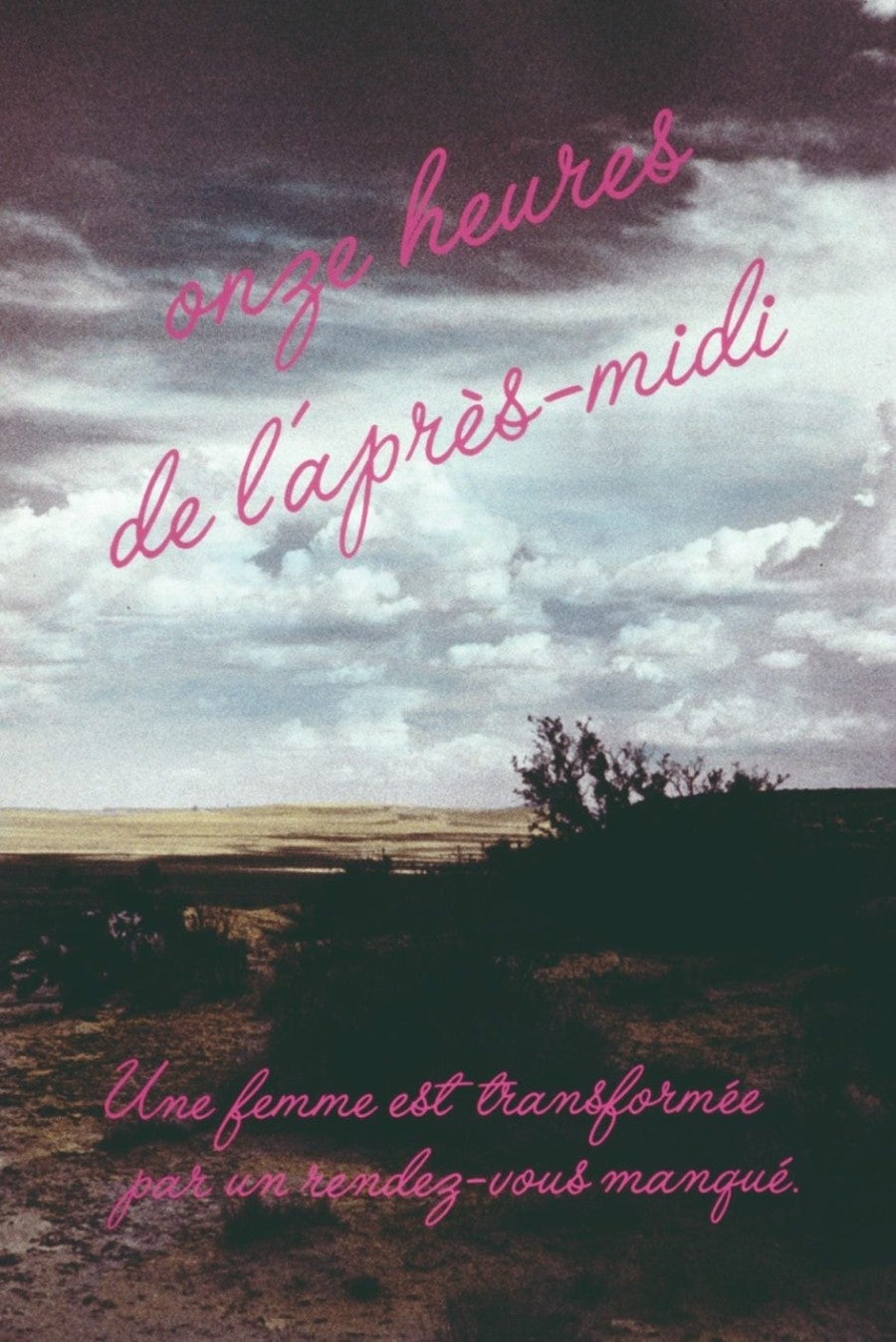

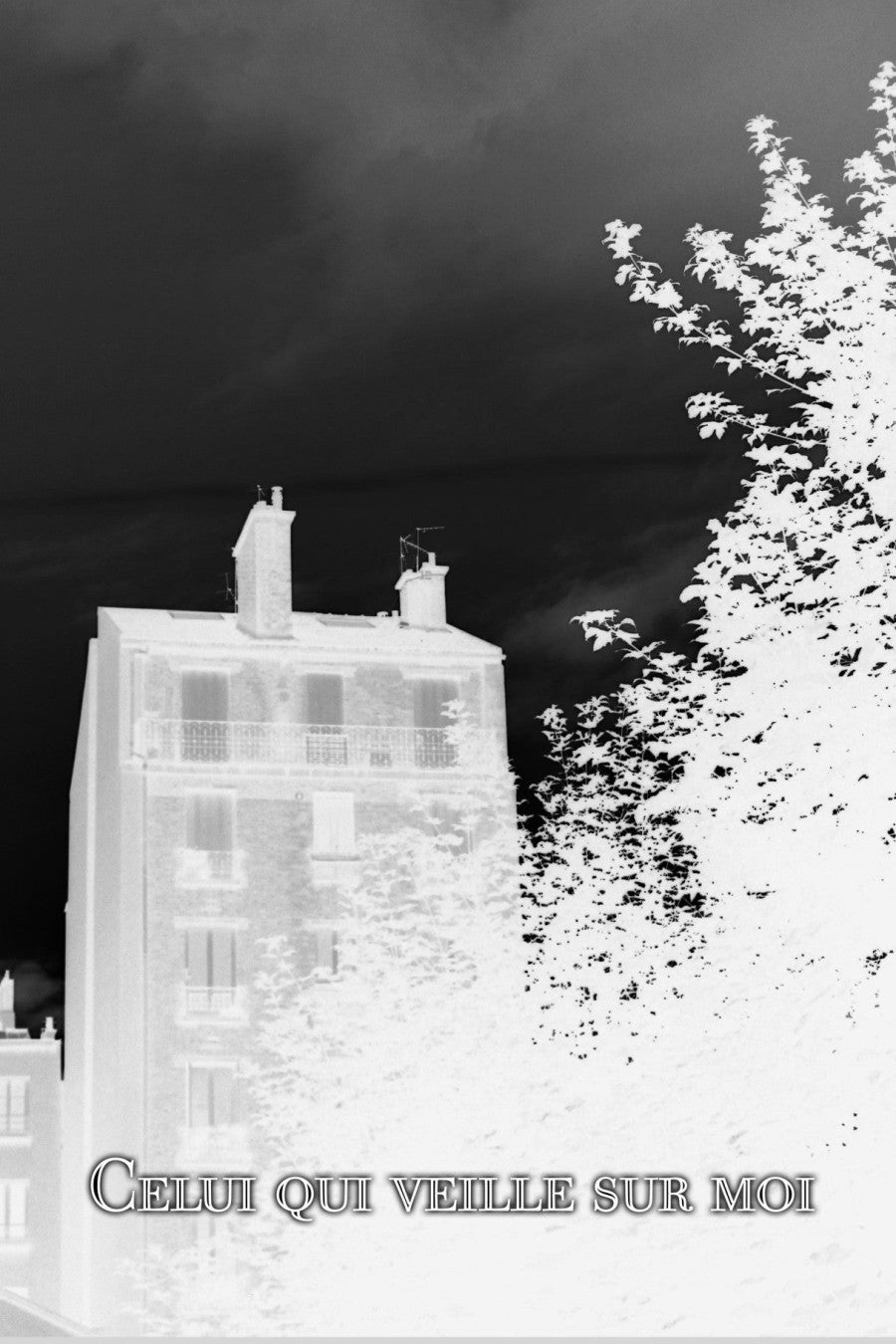
And the fragments?
I see the practice of Martine Aballéa’s as an ‘in-seeing’ exercise, which uses a supra-real technological dimension of images, sculpture, music, light, objects, space, experience, process and our presence in the installation in the way that Rilke was reconceiving poetry. In Aballéa’s practice, perception is a medium through which the micro- and the macro-cosmos meet and generate worlds that are both deep within and beyond our planet; in that sense, the image is a substance that generates alchemies. In her work, we discover that our senses might be capable of liberating themselves from their own constraints, becoming a new nature within nature itself. Imagine the installation’s screens and objects as beings—as independent as the panthers and lions that Rilke observed. I envisage Aballéa’s works living free of the gallery’s walls and spaces—the screens turning the colour of the images that they carry, like animals mimicking their environments.
And the fragments? They are like Apollo’s archaic torso in Rilke’s poem3:
We cannot know his legendary head
with eyes like ripening fruit. And yet his torso
is still suffused with brilliance from inside,
like a lamp, in which his gaze, now turned to low,gleams in all its power. Otherwise
the curved breast could not dazzle you so, nor could
a smile run through the placid hips and thighs
to that dark centre where procreation flared.Otherwise this stone would seem defaced
beneath the translucent cascade of the shoulders
and would not glisten like a wild beast’s fur:would not, from all the borders of itself,
burst like a star: for here there is no place
that does not see you. You must change your life.
And, like a bird, images vanished into the adjoining room
Aballéa’s practice builds daring bridges from one dimension of life to another.
Often, works with the traits of Martine Aballéa’s invite interpreters to recall storytelling. However, after spending time with her practice, I observed the contrary effect, as it opened my mind to how problematic storytelling is. Aballéa’s artistic language stresses the importance of allowing the artist’s idiosyncratic ways to create complexity through the use of poetry and image, not in favor but against conventional narrative. Suddenly, I understood why I shiver every time I hear the word ‘storytelling’. Don’t get me wrong, I love stories, and used to be fascinated by the history and evolution of their structures. The Russian Structuralists dedicated time and effort to understand what elements are needed to produce a tale: the ingredients that add or twist the systemic machine that narrates as well as the actions needed to emotionally move us. My antagonistic reactions to storytelling are grounded in how it generates empathy for the story’s characters and surprise even when we know how the story will end, which rehearses the same type of behaviours in real life, thereby reducing the possibility for change and a bigger surprise. Storytelling drills in patterns and expectations that we solidify in society, even before we have a chance to reach the level of politics, leaving almost no room for the contrary of the tale, that is, for speculation. Even before the birth of Capitalism, tales were created to secure stability, to secure the order of things and reduce the chances of otherness to its radical minimum.
By contrast, Aballéa’s practice offers the possibility of throwing our ideas at once into a different kind of arrangement—a mutable arrangement that allows for their coexistence, without the need to impose order on them. By creating senses of connections—between art and science, art and technology, nature and us—the artist invites us to reflect on storytelling’s narratives. Aballéa’s way of layering histories and futures, by relating images to ideas and to bodies, produces an additional dimension—a previously unknowable dimension that can emerge only when things are thrown off from the typical road of their story. Aballéa’s practice builds daring bridges from one dimension of life to another.
Attention is the general name we have learned to give to a very complex interaction of senses, experiences and thinking. One that demands to be constantly expanded. The Modern methods and knowledge disciplines have been designed to embody ‘attention’ in a certain way and this way collides with the design of technologies that we have created, on the one hand, and with the legitimate desire to merge with nature in a non-binary embrace. It would be wrong to blame technology, and the social forms of using our screens, for our ever-growing singular understanding of attention; by the time we reached the screens, so to say, our attention was already damaged.
How can we repair that damage? In bringing a complex network of animated spaces into the inanimate space of the gallery, Martine Aballéa exposes multiple hidden connections and relationships. Sensual intuition and abstraction move in and out of sync with images and sounds that we might think we already know. Her work functions like an unconventional instrument, one that we have never heard before and yet one that has already taken hold of our hearts. It sings out new magnitudes and ways of attending, that is, of being fully there, present.
The Phenomenology of Strangeness
Poetic phenomenology can be described as the ruction of imagination, a perpetual interaction between the human subject which imagines and the image itself. This interaction is not a metaphoric one, but an actual movement that the artist ignites and produces. Kinetics play a role in her method. An image—as well as an object—offers the artist the possibility of solidifying what is represented. Iridescence—the ability of the images and object to emanate light—on the contrary, is intended to evacuate the possibility of having the image in a permanent state of unrest. Think of jewels—and their historical role—for a moment. Gems, full of light and color, are implanted in an inert mineral, gold or other, in order to achieve exactly the same effect, that interaction between solidity and a dimension of kinetic energy being present. Translucent effects, icy shinny turquoises, deep-sea greens and peony-rose pink emanating so that we understand that nothing, no reality is complete, without the brilliance that is added to the images. These arrangements that Martine Aballéa creates orchestrate this jeweled light over our senses in order to create stages and passages between the different reals that compose reality. There will probably never be a better moment than this state of touch and perceptional exception created by the COVID-19 pandemic, to understand the importance of the progressive solidification of entities so abstract as a virus—always portrayed as a phosphorescent micro organism—and how it metamorphoses into our senses and habits creating a weird companionship to all we do in life. The invisible, suddenly but surely, becomes a presence in every story’s opening sentences.
In the work of Aballéa, too, was abstraction always a solid presence. Her work constitutes an inventory of the instances of a phenomenology of strangeness and signals its importance to understand love, hope and the possibility of a time elapsing into another time. Diane Ackerman once pointed to the odd fact that when humans want to attract other humans they wear not their own scent but the scent of flowers4. Martine Aballéa points out that we need to wear the scent of art to fully grasp the complexities of the real.



















